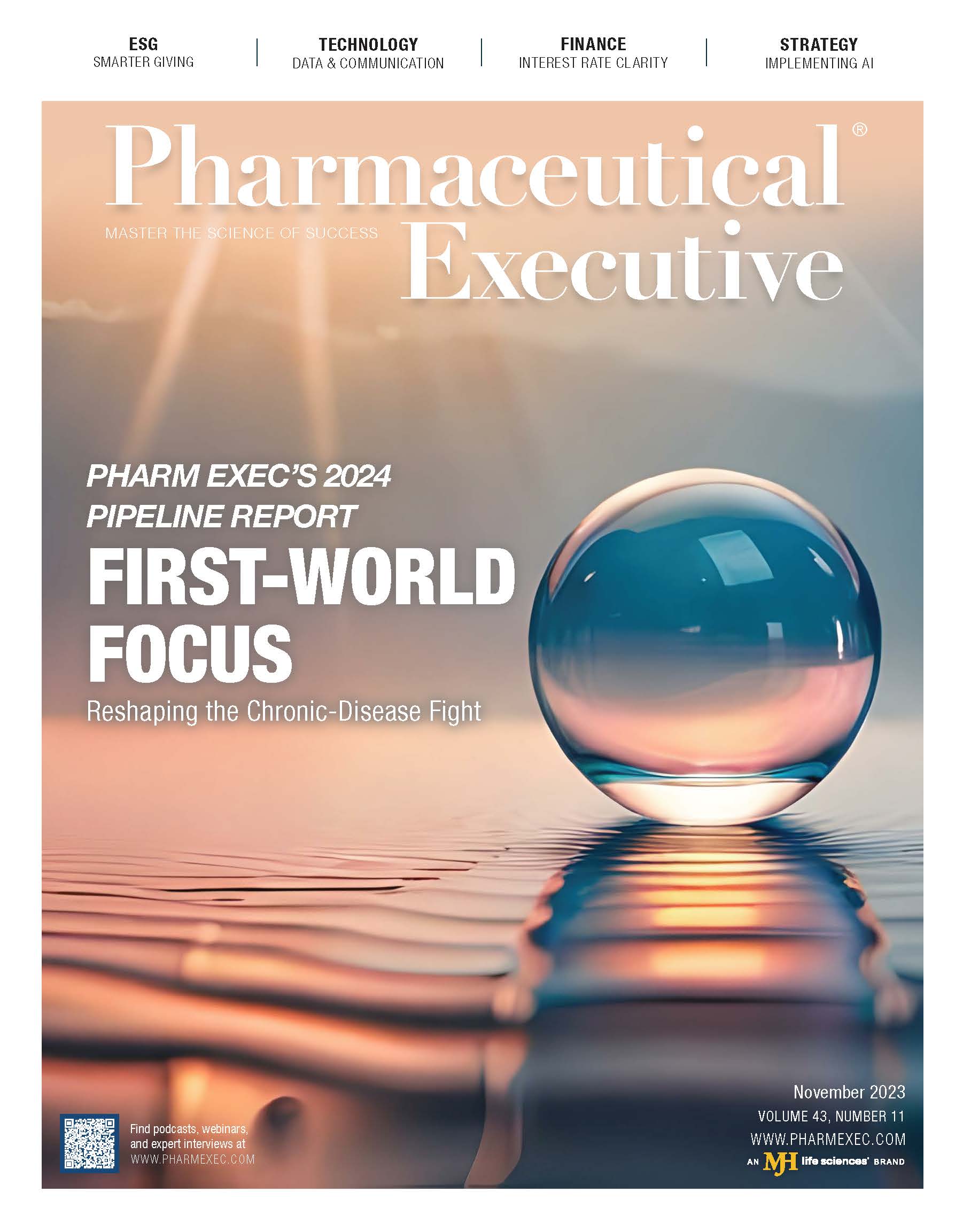Pharma Giving is Still Strong Despite Post-Pandemic Shifts
Nevertheless, it’s time to reassess how to leverage for greatest impact.
Geralyn Ritter
Head of Corporate Affairs,
Sustainability, and ESG
Organon

The world has seen tremendous upheaval the past few years—a global pandemic, civil unrest, natural disasters, and more. For many pharma companies, significant increases in cash and in-kind support were key to their response, resulting in our industry leading all others in philanthropic support. For the first time, Chief Executives for Corporate Purpose (CECP) included a breakout of data for the biotech and pharmaceutical industry in their annual Giving in Numbers survey, revealing some interesting trends in pharma giving. Let’s dig in.
DECREASE FROM HEIGHT OF PANDEMIC GIVING
Across industries, the median total community investment, or sum of direct cash, foundation cash and in-kind, was $28.4 million in 2022, a decrease of 14% from 2020.1 This decrease is certainly due to ballooned giving during the height of the COVID-19 pandemic and response to civil unrest in the US that dominated 2020 and 2021. Remove those variables and you will see a modest 1% increase in giving budgets from 2021 to 2022,1 despite widespread humanitarian aid for Ukraine.
This is noticeably slower annual growth than the 3% to 5%1 we saw pre-pandemic.
PHARMA INVESTMENTS DRIVEN BY IN-KIND DONATIONS
A common baseline for determining corporate giving targets is a percentage of pre-tax profit, with a standard benchmark of 1%. In 2022, median annual giving for all companies was close to this target at 0.94%. But in pharma, this percentage was 13.7%.2
Why such a stark difference? Let’s peel back the onion. For starters, a vast percentage of pharma’s corporate giving is in the form of non-cash contributions, primarily product donations. In 2022, pharma’s median community investment was nearly $1.5 billion, 97%2 of which was non-cash. This is not surprising, given the value of in-kind goods we can provide.
Pharma led the way in corporate giving when the pandemic threatened the global health system, dedicating most of its community resources to relief efforts, including product donations such as personal protective equipment and medication.
NOTABLE PRIORITY FOCUS AREAS
Unsurprisingly, pharma and other surveyed companies continued to focus on supporting health and social services, following a consistent trend. But new focus areas also emerged. Of note, was a dramatic increase—a whopping 54%—in support of environmental causes, between 2020 and 2022.1 As climate change and its impacts persist, companies are externalizing their environmental strategies through community investments. And rightfully so. At their nexus is a golden opportunity to support a sustainable future for business, communities, and society.
At Organon, we recently invested in the development of a framework for funders to better understand the intersection of climate change, gender, and health—a way for us to strategically link our focus on women with the evolving issue of climate change and to encourage others to do the same.
Science, technology, engineering, and math (STEM) remained another top priority area, with a 13% increase in median support from 2020 to 2022.2 In a world driven by materiality, this focus is notable for pharma companies as ESG ratings agencies heavily weigh human capital in their assessments. As pharma continues to be a destination for top-notch talent in STEM, we have a unique opportunity to further invest in education to foster the future workforce.
LOOKING AHEAD
The future will likely see a continuation of significant community investment from the pharmaceutical industry. As giving totals trend back to pre-pandemic levels, pharma companies have to reassess and rebalance their giving portfolios to be more strategically aligned with priority areas, which shifted post-pandemic. As pressure is on the industry to do less with more, even as natural disasters, war, and global health crises persist, we not only have to think smarter but give smarter as well.
References
- Giving in Numbers 2023 Edition. CECP. October 2023. https://cecp.co/ home/resources/giving-in-numbers/
- Sub-Industry Benchmarking Report from CECP Based on 2022 Giving Data from “Giving in Numbers 2023 Edition.” October 2023.

Cell and Gene Therapy Check-in 2024
January 18th 2024Fran Gregory, VP of Emerging Therapies, Cardinal Health discusses her career, how both CAR-T therapies and personalization have been gaining momentum and what kind of progress we expect to see from them, some of the biggest hurdles facing their section of the industry, the importance of patient advocacy and so much more.
Applying Porter’s Five Forces to Portfolio Management in Pharmaceutical R&D: A Strategic Roadmap
March 17th 2025The increasing costs and complexity of R&D in the pharmaceutical industry have necessitated the adoption of strategic portfolio management to optimize resource allocation and enhance competitive advantage.